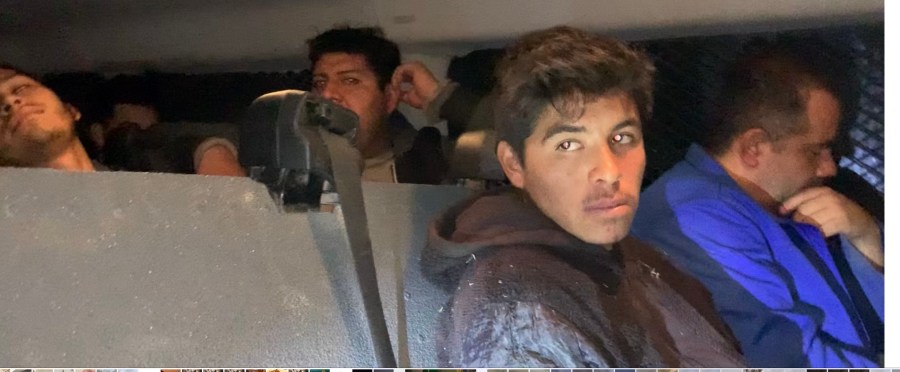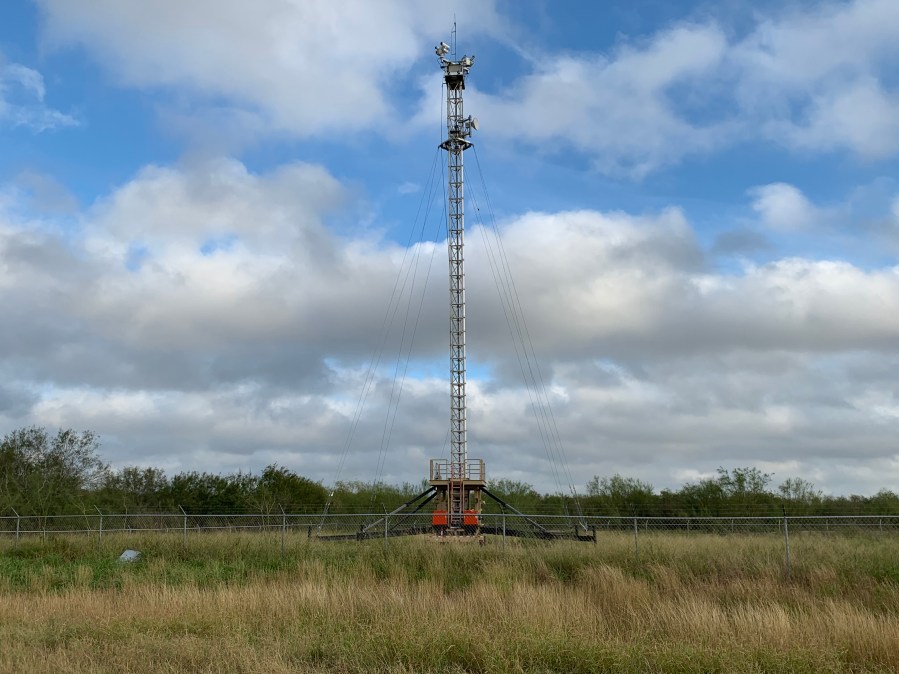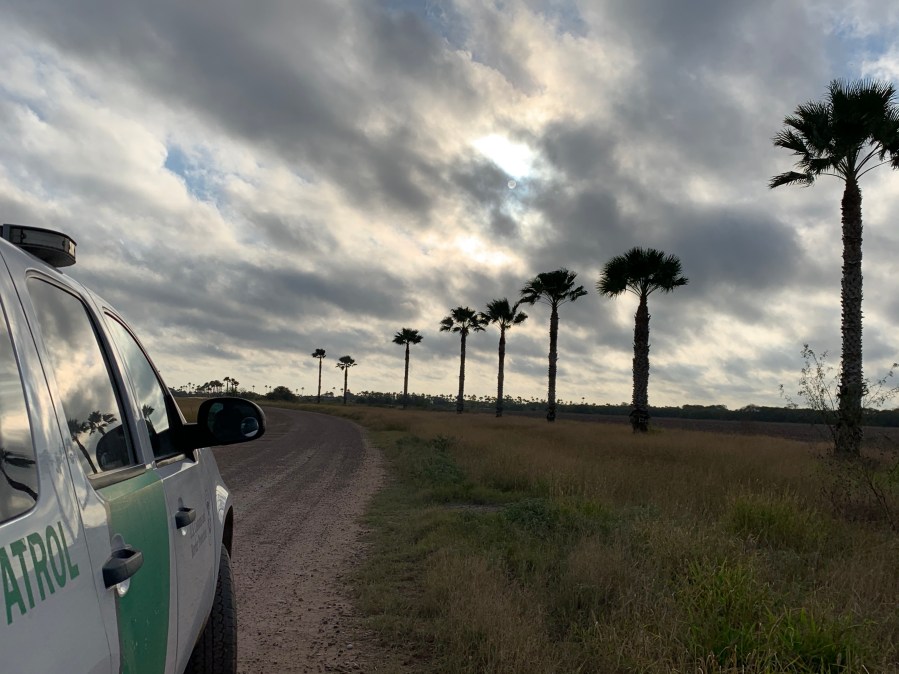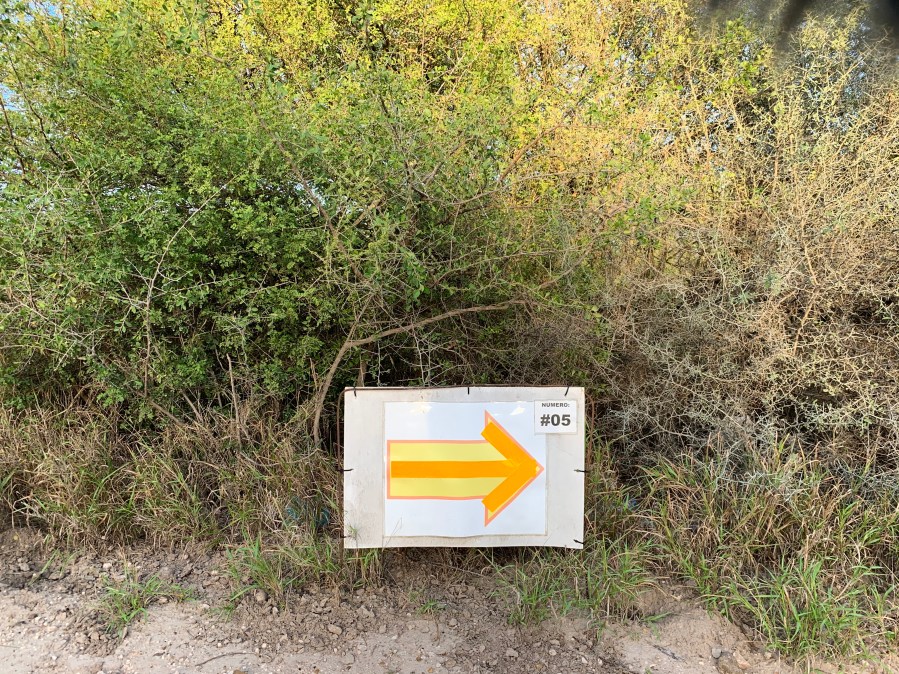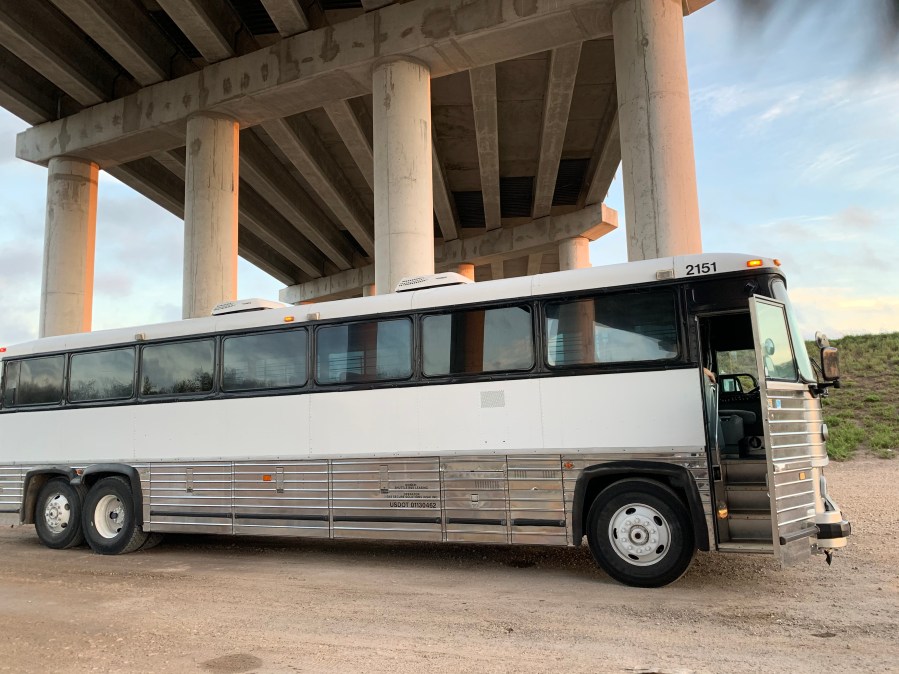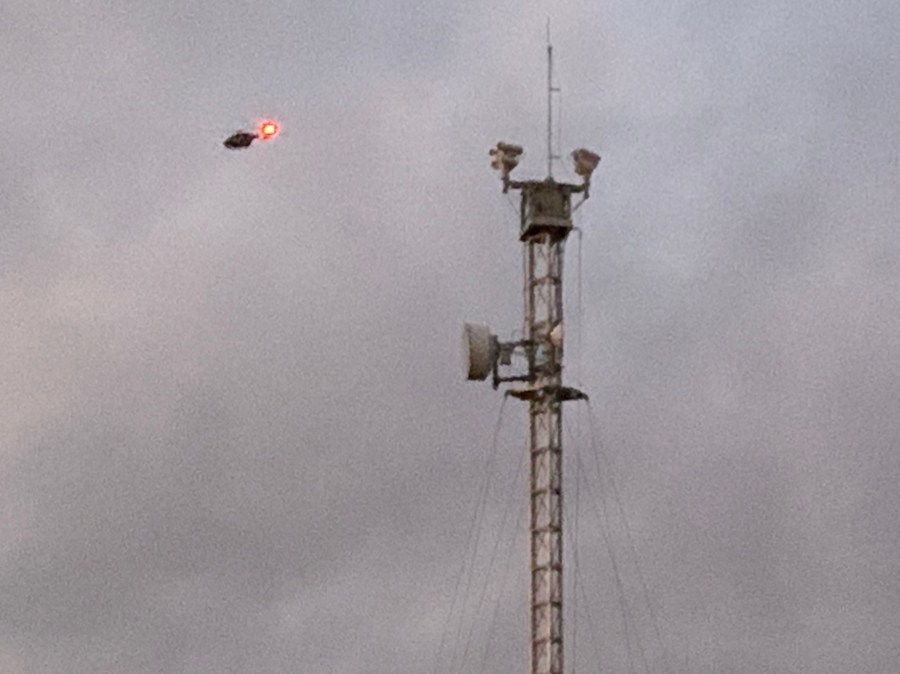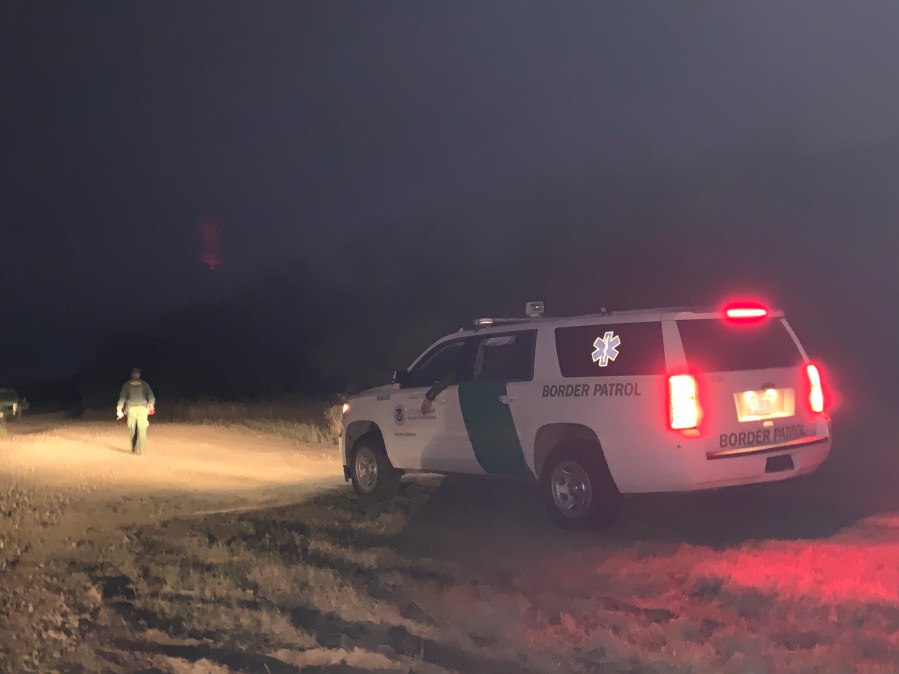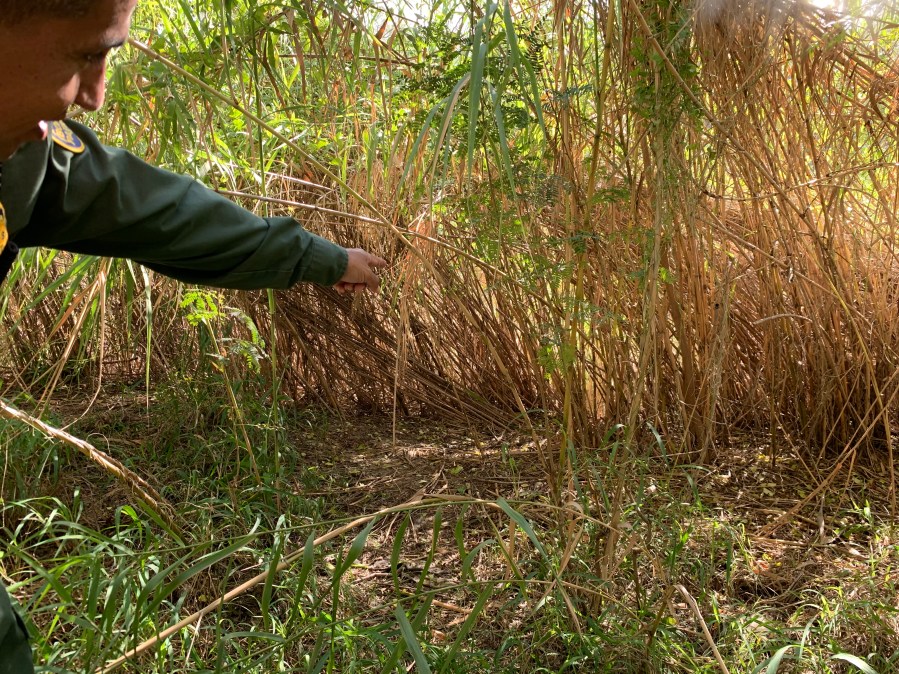GRANJENO, Texas (Border Report) — U.S. Border Patrol Agent Hermann Rivera was patrolling a dirt road near the Rio Grande on Wednesday when a group of 20 migrants suddenly came out of the bushes straight toward his vehicle.
It was barely 9 a.m. and Rivera was the lone agent on the scene, but he jumped out of his Chevrolet Tahoe and immediately made contact with the group. The party of women, children and seven unaccompanied boys made a beeline for Rivera, one-by-one and many holding hands. They surrendered and lined up on the South Texas road in front of him.
Rivera grouped the migrants, separating the unaccompanied minors — which included twin teen brothers — and began asking them all questions.
Aside from the unaccompanied boys, the rest were “family units,” which is the term Border Patrol agents use for migrants who come with children seeking asylum in the United States.
After three days lost in the area, they said, without food or drinks, they readily turned themselves into Rivera with many expressing relief that they had found help.
“This might have been the best day of their lives,” Rivera said about them being found.
Apprehension scenes like this had been common in the Rio Grande Valley, which has been the epicenter for migrants crossing into the United States on the Southwest border since the surge began in the summer of 2014.
For the past five years, the Rio Grande Valley Sector of the Border Patrol has had the most migrant apprehensions of any sector in the entire Southwest border. This vast sector begins at Brownsville, Texas and includes 277 river miles along the Rio Grande.
It also is No. 1 for the most seizures of marijuana and cocaine, Rivera said.
But groups turning themselves in have waned lately, due to a number of programs and policies implemented by President Donald Trump’s Administration, as well as stepped-up enforcement efforts by Mexican officials on their northern border, Rivera said.
Since the Migrant Protection Protocols program, also called Remain in Mexico, was started in mid-July, the number of apprehensions in South Texas and along the Southwest border have dramatically dropped. That is because the majority of asylum-seeking migrants are no longer allowed to remain in the United States, but must wait in Mexico during their asylum proceedings.
Overall on the Southwest border, migrant apprehensions were down for a fifth consecutive month in October, with 9,806 arrests made — a 31 percent decrease from October 2018 and a 73 percent drop from the year’s high in May, the U.S. Border Patrol reported recently.
Most of the women and children apprehended on Wednesday on this dusty remote trail –which was littered with discarded blue jeans, jackets, water bottles and diapers from other previous migrants — said they were unaware of this relatively new change to U.S. immigration policy. And when told they would most likely be sent back to Mexico, there was much trepidation.
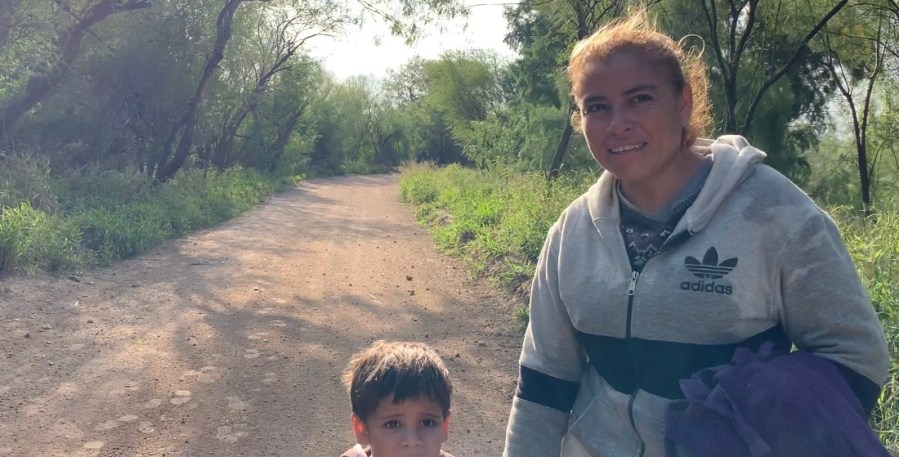
“We don’t want to wait in Mexico,” Reyna Lopez Giron, 29, said.
Lopez left Guatemala City weeks ago with her four-year-old son, Anderson, “because we were scared to stay there,” she said in Spanish just minutes after turning herself into Rivera.
“Sometimes we were threatened. That’s why we ran away from our country. We’re scared for our children,” she said crying.
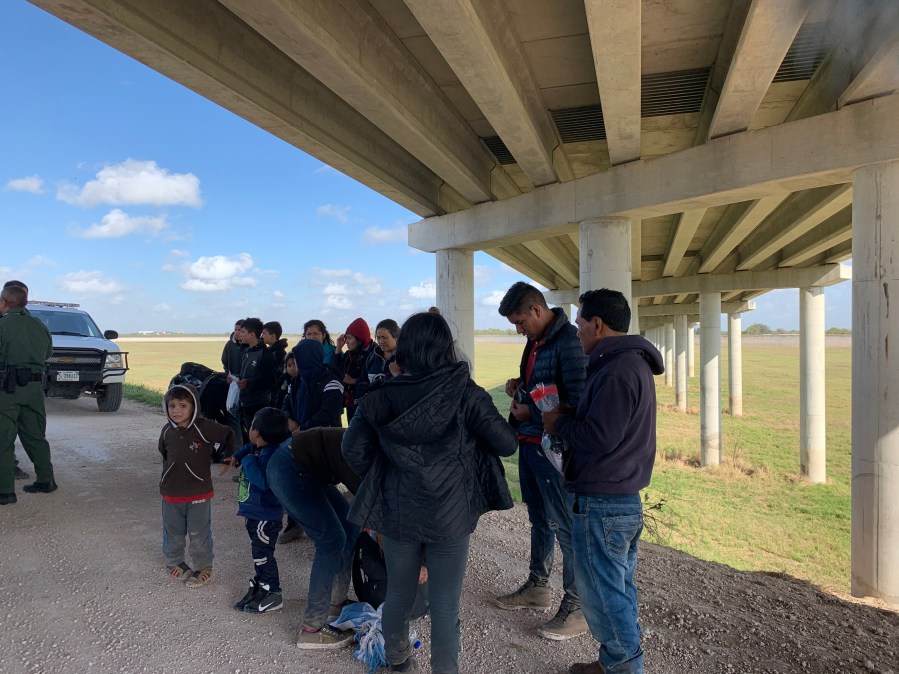
Over 2,000 asylum-seekers apprehended in the RGV Sector are now living on the streets of Matamoros, Mexico, in a tent city at the base of the Gateway International Bridge just across from Brownsville, Texas. Recently Mexican officials tried to round up the children and force them to a shelter as temperatures plummeted and heavy rains hit the area.
Volunteers working in Matamoros say every day the amount of asylum-seekers grows by about 100 in the tent city, which is now spreading beyond the tiny swath of bridge land that is controlled by the Mexican federal government.
Cartels ‘extort us’
An hour before the group of 20 were apprehended on Wednesday morning, Gabrielle Hernandez, 35, of Honduras, was also taken in by U.S. Border Patrol. He was among 12 picked up near the same spot and then processed under a windy highway overpass.
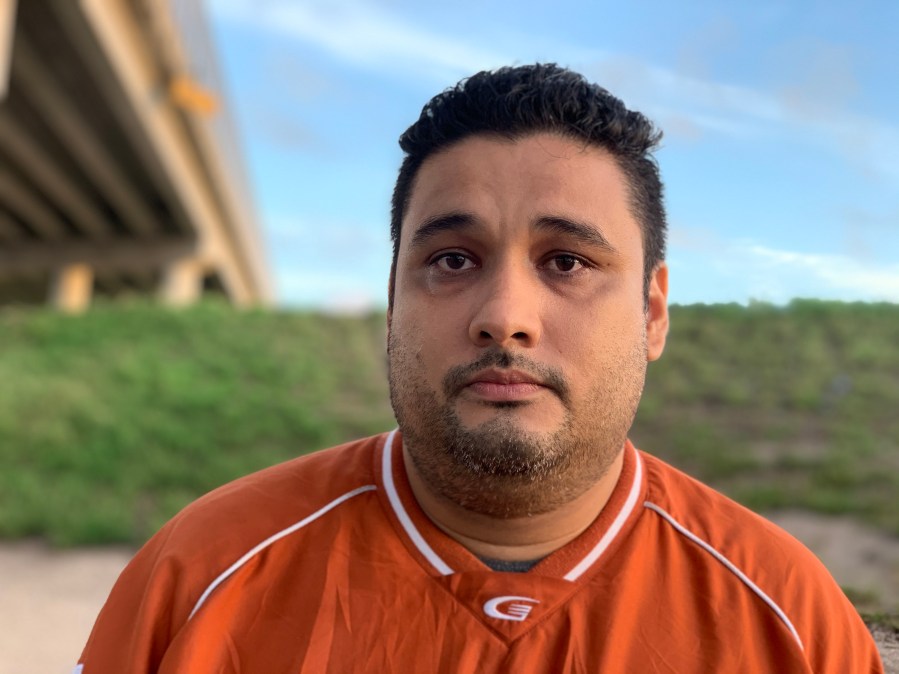
There, Hernandez began crying when thinking of what could happen to him if he is sent back to Mexico. He said the Cartel exploits migrants and he feared for his family.
He was arrested along with his 68-year-old mother, his wife, and his two sons, ages 15 and 1. It took them six days to get to this spot and they walked, took the bus and hitch-hiked along the way, he said in Spanish.
They left Honduras, he said, because he was being extorted for money by criminal groups that demanded more and more each week.
“We had enough money only to live for the family and to cover some expenses but not to pay someone else,” he said. “But they said if we don’t pay any more we won’t be safe anymore. … I love my country but they didn’t give me another option and I’m not going to put my kids at risk.”
When asked if he realized that his family would likely be sent to Matamoros, Hernandez said he did not. And he shook with fear at the idea of going to Mexico where cartel drug gangs often extort and prey upon migrants, according to several advocacy organizations.
On Wednesday, U.S. Rep. Filemon Vela, D-Texas, whose district includes Brownsville, held a news conference in Washington, D.C., to demand better living conditions for the migrants who are returned to Mexico under MPP. Vela called the conditions “deplorable” and was joined by several advocacy organizations who detailed how migrants are preyed upon by drug cartels as they wait for months and months in the heat and cold for their chance to go before a U.S. immigration judge.
Read a previous Border Report story on Matamoros MPPs here.
Force multipliers and PTI
Agent Rivera said during his 25 years of government service he has come to realize that there is no one single solution to solving immigration. He said a “coordinated response” from multiple agencies using manpower and technology, and agents are what is needed to combat the crisis.
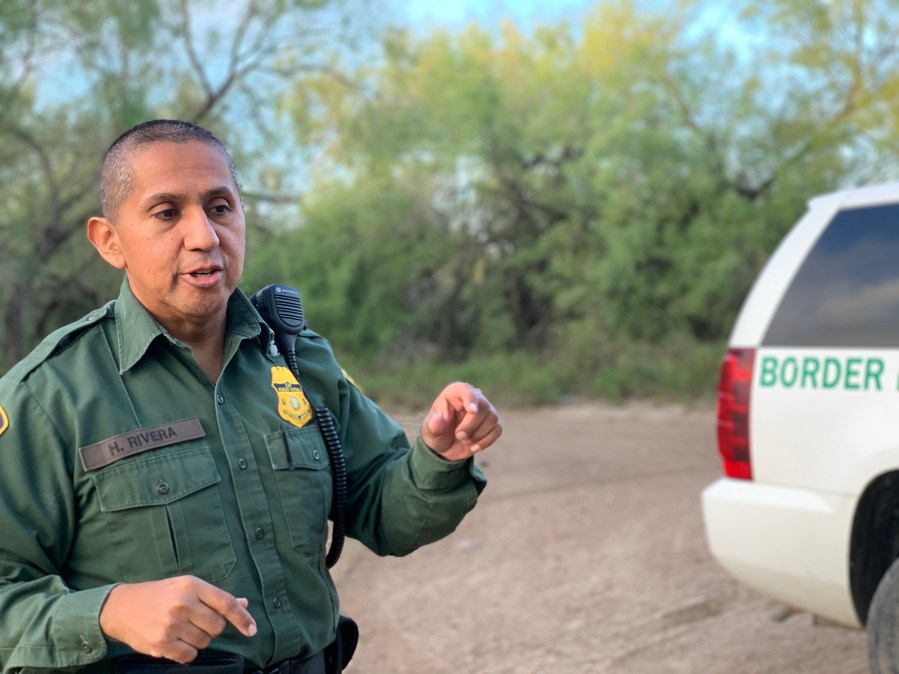
As he spoke, a helicopter operated by the National Guard flew overhead in the pre-dawn darkness, circling to indicate possible migrants picked up by heat-sensing equipment. The station’s radio crackled with news from agents as they pursued seven adult men, who were moments later picked up and put in an awaiting van.
Radio towers, infrared cameras, underground sensors, Aerostat blimps, Blackhawk helicopters, ATVs, horse-patrol units, riverboat units, and a host of manpower from local law enforcement all play a part in combating illegal immigration, CBP spokesman Roderick Kise said.
Kise called the combined enforcement PTI: Personnel, technology and infrastructure.
That has enabled the sector’s 3,000 Border Patrol agents “to do their job,” which is less of a humanitarian-role and more of laws enforcers, Rivera added.
“We had been fulfilling a humanitarian role. We had to be caretakers. Now we’re back to enforcing the laws of our country,” Rivera said. “And you can have all the infrastructure and technology in the world but you still need agents.”
Visit the BorderReport.com homepage for the latest exclusive stories and breaking news about issues along the United States-Mexico border
